CHINA'S ENVIRONMENTAL AIR - POLLUTION ,THE TEXTILE INDUSTRY IS THE FOUGHT - LARGEST CONTRIBUTOR OF CHEMICAL OXYGEN DEMAND( COD).WHICH HAS CAUSED WIDESPREAD ENVIRONMENTAL .TOXIC CHEMICAL POLLUTION IS DEADLY FOR PEOPLE IN CHINA.
China
faces three major environmental health hazards: air pollution, water
pollution, and soil contamination. As early as 2007, a study found that
the health costs of air and water pollution in China amounted to about
4.3 percent of China’s GDP.
In 2012, PM2.5 particulate pollutants, considered to be the most
hazardous to human health, were linked to 670,000 premature deaths from
strokes, lung cancer, coronary heart disease, and chronic obstructive
pulmonary disease. A 2013 study also found that air pollution is
associated with a reduction in life expectancy at birth of about 5.5
years in northern China. Meanwhile, the widespread production and use of
toxic chemicals in agriculture and manufacturing industries have
contaminated water and farmland, contributing to the emergence of more
than four hundred “cancer villages,” areas where cancer rates are
unusually high.China's
rapid economic development has come at the cost of severe environmental
degradation, most notably from coal combustion. Outdoor air pollution
is associated with >300000 deaths, 20 million cases of respiratory
illness, and a health cost of >500 billion
renminbi (>3% of gross domestic product) annually. The young are
particularly susceptible to air pollution, yet there has been only
limited recognition of its effects on children's health and
development.China relies on coal for ∼70% to 75% of its energy needs,
consuming 1.9 billion tons of coal each year. In addition to CO2, the
major greenhouse gas, coal burning in China emits vast quantities of
particulate matter, polycyclic aromatic hydrocarbons, sulfur dioxide,
arsenic, and mercury. Automobiles emit nitrogen dioxide and benzene in
addition to particulate matter and polycyclic aromatic hydrocarbons.
Seventy percent of Chinese households burn coal or biomass for cooking
and heating, which contaminates indoor air. Adverse effects of
combustion-related air pollution include reduced fetal and child growth,
pulmonary disease including asthma, developmental impairment, and
increased risk of cancer. A prospective molecular epidemiologic study of
newborns in Chongqing has demonstrated direct benefits to children's
health and development from the elimination of a coal-burning plant.The
human and fiscal cost of air pollution is irrefutable. Since 2013, the
World Health Organization (WHO) has tracked air quality to measure its
effect on heart disease, strokes, lung cancer, and other respiratory
illnesses. China and India each had 1.1 million air pollution-related
deaths in 2015, accounting for half of the world’s total air pollution
deaths that year.Recognition of the full health and economic cost of air
pollution to Chinese children and the benefits of pollution reduction
should spur increased use of renewable energy, energy efficiency, and
clean-fuel vehicles. This is a necessary investment for China's future.The
communist party’s central leadership issued an “opinion” that proposed
to evaluate officials on both their economic and environmental record.
Yet this new policy rhetoric appears to contradict China’s
performance-based legitimacy, which
relies on delivering sustained economic growth. Since 1989, China has
been governed by an implicit social contract: the regime commits to
improving the material well-being of the people in exchange for the
latter’s support of the party’s monopoly over political power. Herein
lies in the dilemma for Chinese leaders: The party must keep economic
growth above 7 percent to ensure employment and keep the people happy.
Yet, these new measures to combat pollution are likely to undermine
efforts to sustain GDP growth (at least in the short run). The recent
economic slowdown exacerbates this dilemma. In January 2015, China’s
growth rate edged down to 7.4 percent, its weakest expansion in over two
decades. The International Monetary Fund recently revised down China’s
2015 GDP growth forecast to 6.8 percent. Just last month, the Chinese
finance minister warned that unless China maintains a growth rate above
6.5 percent, the country has a greater-than 50 percent chance of
slipping into the so-called middle-income trap, which occurs when a a
country with middle-income status gets stuck at that level, instead of
being elevated to the income levels of the truly developed countries.

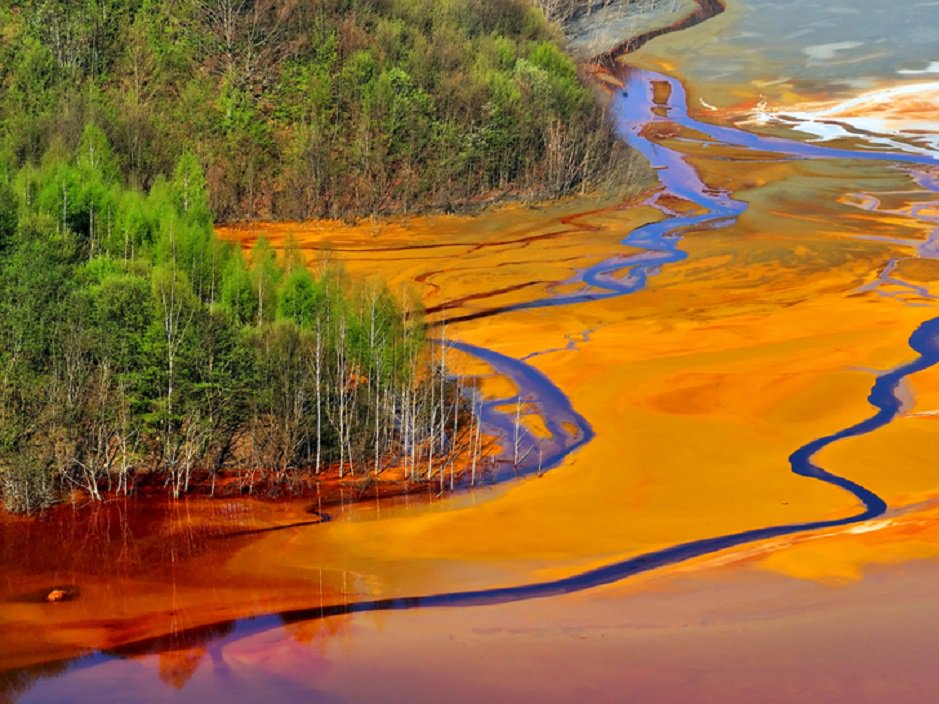
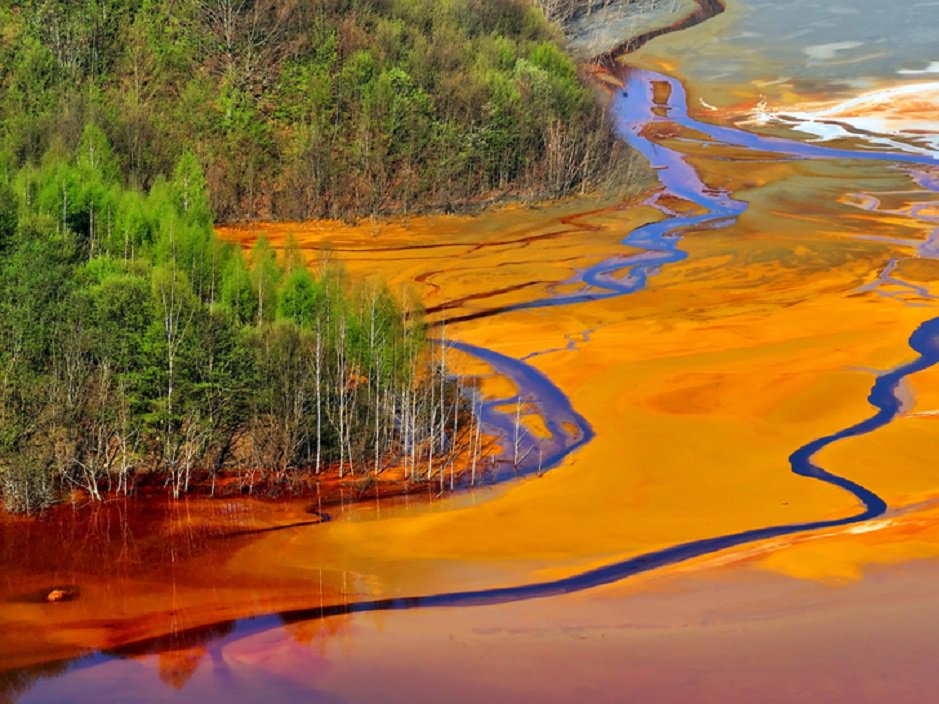 After
more than three decades of rapid industrialization and modernization,
China is on the cusp of becoming the world’s largest economy. Yet
China’s economic miracle has imposed tremendous social costs. One third
of China’s major rivers and 60 percent of
its underground water supplies are polluted due to poor environmental
regulation and unbridled Industralization. Such environmental problems
pose a serious and sustained threat to the health and well-being of the
Chinese people.
After
more than three decades of rapid industrialization and modernization,
China is on the cusp of becoming the world’s largest economy. Yet
China’s economic miracle has imposed tremendous social costs. One third
of China’s major rivers and 60 percent of
its underground water supplies are polluted due to poor environmental
regulation and unbridled Industralization. Such environmental problems
pose a serious and sustained threat to the health and well-being of the
Chinese people.
Chinese Government efforts to address the environmental health crisis are further complicated by an increasingly polarized Chinese society. Establishing the relationship between the environment and health is notoriously complex. Given the range of hazards individuals may be exposed to on a daily basis, it is extremely difficult to establish a causal relationship. Despite the indiscriminate nature of an environmental health problem, health effects are not felt equally in every community or even by each person within a community.As with all public policy issues, proactive government responses to the health crisis run the risk of creating both winners and losers. Departments and nongovernmental actors promoting environmental protection would see their power and prestige increase, while polluting industries (including those who work for them) stand to lose. When Under the Dome, a TED Talk-style documentary investigating China’s air pollution went viral in China in March 2015, the newly appointed minister of environmental protection personally thanked the producer, Chai Jing, for her work. Still, petrochemical industry insiders disputed Chai’s claims that lax quality standards for petroleum were a primary contributor to China’s worsening air pollution.The tension between environmental protection organizations both official and nongovernmental and powerful vested interests reflects an increasingly polarized Chinese society. Despite the popularity of Chai’s video, a large number of Chinese Netizens debated the validity of its arguments about the relationship between business practices and pollution and the role of the state vis-à-vis the market. Many officials and intellectuals questioned Chai’s motives and integrity. Although initially there seemed to be government approval for the documentary, Under the Dome’s pointed criticism of the resistance of powerful interests to tougher fuel standards and the failure of government agencies to implement strong regulatory standards soon led top leaders to have second thoughts. Within a week of its release, the video was blocked by government censors.Thousands die each day from breathing the toxic air in China, according to the World Health Organization. The air quality in Beijing was so bad in 2015 that simply breathing on a high-pollution day could do as much damage as smoking 40 cigarettes. On an average day, breathing is equivalent to smoking four cigarettes, according to a Berkeley Earth study.But one man is on a mission to help clean up China.China’s Water Crisis” was the first major book on the country’s environmental crisis. He is the director of the nonprofit Institute of Public and Environmental Affairs, which tracks air and water pollution on a website and mobile app, and pushes the government and manufacturers on environmental issues.That exploding growth in manufacturing and industry has contributed to the environmental crisis in China. Despite newer environmental rules, nearly 70 percent, or 13,875 companies, were found to be violating China’s own standards. The Chinese government’s most recent environmental report reveals that 75 percent of Chinese cities can’t meet the nation’s new air quality standards. Despite an effort to clean China’s polluted skies, it actually became 5 percent worse in October. In addition to air pollution, groundwater supplies in more than 60 percent of major Chinese cities were categorized as “bad to very bad”, according to China Water Risk. Air pollution is measured by the Air Quality Index (AQI), which scales pollution levels from 0 to 500 and assigns a color to different number levels to measure how hazardous the air quality is on any given day . Levels of 100 or below are known as “Blue Sky Days”, when smog is not easily visible.However, levels now reach up to 755, as measured by the United States Embassy in Beijing, which employs its own pollution reading device. This is the highest level of air pollution since recording began in 2008, and was appropriately deemed “Beyond Index”. The World Health Organization suggests that scores near 500 contain more than twenty times the safe level of particulate matter in the air.
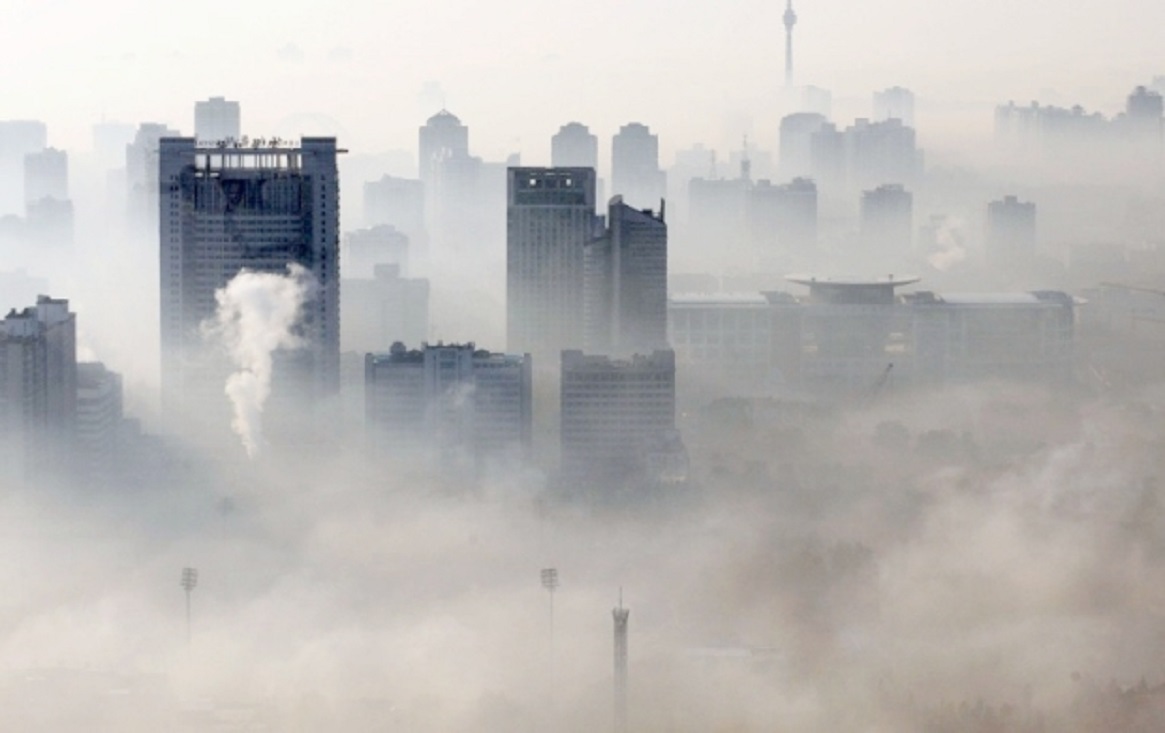 China
has been the world’s biggest emitter of carbon dioxide for more than a
decade. It is responsible for nearly 30 percent of the Earth’s carbon
emissions, according to the Emissions Database for Global Atmospheric
Research.
China
has been the world’s biggest emitter of carbon dioxide for more than a
decade. It is responsible for nearly 30 percent of the Earth’s carbon
emissions, according to the Emissions Database for Global Atmospheric
Research.
The shorter lifespans of Beijing’s citizens has been connected to high pollution levels.7,8 Compared to citizens living in southern China, the average life span for Beijing’s citizens is five to six years shorter. The air pollution in Beijing causes lower birth rates and higher adult mortality from respiratory related diseases. Lung cancer rates have risen over 60% in the past decade, although the smoking rate has not increased.The Chinese Academy for Environmental Planning determined that air pollution was responsible for 411,000 premature deaths across China. The 2008 Olympic Summer Games in Beijing was the catalyst leading to many new policies to address air pollution. Emergency measures were enacted depending on the pollution levels, but the most important factor in curbing air pollution is the implementation of new laws and reformation of old laws. The Olympics were crucial in raising awareness about reform of environmental regulations. Many factories, industries, and manufacturing plants were shut down for the duration of the games and driving restrictions were imposed on millions of vehicles.1,9 Although this was a temporary solution for the Olympics, city officials promised to spend over $12 billion dollars on improving the environment. City officials converted coal furnaces in tens of thousands of homes to natural gas and relocated factories to other provinces in China.Emergency measures have also been enacted in Beijing. Mandatory factory closures and bans on motor vehicles entering the city are implemented on days of heavy air pollution. In 2013, the Heavy Air Pollution Contingency Plan was passed.10 This plan consists of four warning levels based on air pollution levels. Depending on the warning level, different actions are executed, which include school closures, removing 80% of government vehicles from the road, allowing certain private cars on the roads based on registration plate numbers and day of the week, barring freight and construction vehicles from the roads, utilizing watering carts and sprinkler trucks, shutting factories down, halting construction sites, and even forbidding barbecues and fireworks.10 To most effectively address air pollution would require reform in government laws and behavior.The State Environmental Protection Administration (SEPA) was established in 1998. The organization has the difficult task of reforming environmental laws that are often ignored by leaders. Another problem of environmental laws is the fines are so minuscule that offending corporations would rather pay the penalty, rather than change their business practices.Openness in reporting true pollution levels by municipal governments would also lend clarity to the condition of air quality. The government only reports AQI numbers up to 500. The Chinese government also prefers to release information only on PM10 particles and not larger PM particles. These larger PM particles may be more dangerous than PM10 particles. The United States Embassy did release such information, but was asked by the Chinese government to limit the release of information to Americans.Beijing’s air pollution affects the health of its citizens and threatens to limit the future success and expansion of the city. Though the contamination is extensive, there are possible solutions which can address the problem. By analyzing the sources of pollution, studying its consequences, and by reforming inadequate regulations and laws, Beijing can salvage its environment and create a healthier atmosphere for future generations.With this amplified wealth, individuals are more capable of affording motor vehicles.The number of motor vehicles on Beijing’s roads has doubled to 3.3 million with nearly 1200 added each day. Emissions from motorized vehicles contribute to nearly 70% of the city’s air pollution. The four most dangerous pollutants that are emitted include: sulfur dioxide (SO2), nitrogen dioxide (NO2), carbon monoxide (CO), and particulate matter (e.g. PM10).Newly introduced vehicles have lower emission standards, and thereby emit more of these pollutants into the atmosphere than their older counterparts. Motorized vehicles are only one contributor to air pollution. Population growth in China and Beijing contributes to extensive pollution. Beijing’s population has swelled from 11 million to 16 million in just 7 years, and has doubled over the past century.Coal burning factories also contribute to the smog present in Beijing. These factories rely on outdated and inefficient technologies. The factories are located on the outskirts of Beijing and the nearby cities of Harbin and Hebei. Beijing is a victim of its own topography because it is surrounded by mountains, ensuring that pollution remains trapped within the city limits.Air quality worsens in spring and summer when temperature and humidity levels rise, and winds contribute to the smog by carrying pollutants from industrialized southern regions.There are a variety of consequences of air pollution in Beijing. Along with health consequences, high levels of harmful emissions have led to hundreds of flight cancellations and frequent road closures due to low visibility levels.Air pollution has increased substantially over the years, resulting in thick smog that often engulfs the entire city.
 The
190 most important Chinese cities sample were recorded with an Air
Quality Index (AQI) value around 130. Most affected areas were the
industrial North region including Harbin, Beijing and Tianjin.Particulate
Matters (PM2.5 and PM10) were almost always the principal pollutants
determining the value of Air Quality Index, PM2.5 with 68% of the
city-month records being mostly concerned with PM10 only 29%. As a
consequence, the PM2.5 inclusion in the new AQI definition has
dramatically changed the Air quality perception
The
190 most important Chinese cities sample were recorded with an Air
Quality Index (AQI) value around 130. Most affected areas were the
industrial North region including Harbin, Beijing and Tianjin.Particulate
Matters (PM2.5 and PM10) were almost always the principal pollutants
determining the value of Air Quality Index, PM2.5 with 68% of the
city-month records being mostly concerned with PM10 only 29%. As a
consequence, the PM2.5 inclusion in the new AQI definition has
dramatically changed the Air quality perception
Farmers' fields are a bigger source of water contamination in China than factory effluent, the Chinese government revealed today in its first census on pollution.Senior officials said the disclosure, after a two-year study involving 570,000 people, would require a partial realignment of environmental policy from smoke stacks to chicken coops, cow sheds and fruit orchards.Despite the sharp upward revision of figures on rural contamination, the government suggested the country's pollution problem may be close to - or even past - a peak. That claim is likely to prompt scepticism among environmental groups.The Environment Tax Law was approved at the end of the National People's Congress (NPC) Standing Committee meeting which concluded .The law, to enter into force on Jan 1, 2018, will be key to fighting pollution, according to Wang Jianfan, director of the Ministry of Finance tax policy department.China has collected a "pollutant discharge fee," since 1979. In 2015, it collected 17.3 billion yuan ($2.5 billion) from some 280,000 businesses, Wang said.However, some local governments exploit loopholes and exempt enterprises which are otherwise big contributors to fiscal revenue. For years, regulators have suggested replacing the fee system with a law."The new law will reduce interference from government," Wang told a press conference. It will also improve tax payers' environmental awareness, forcing companies to upgrade technology and shift to cleaner production, Wang said.Under the new law, companies will pay taxes ranging from 350 yuan to 11,200 yuan per month for noise, according to their decibel level. It also set rates of 1.2 yuan on stipulated quantities of air pollutants, 1.4 yuan on water pollutants and a range of five to 1,000 yuan for each ton of solid waste.For instance, polluters will pay 1.2 yuan for emission of 0.95 kilograms of sulfur dioxide and 1.4 yuan for one kilogram of chemical oxygen demand (COD). Carbon dioxide (CO2) is not included in the levying list.Provincial-level governments can raise the rates for air and water pollution by up to ten times after approval by the people's congresses. Lower rates may also be applicable if emission is less than national standards.The law only targets enterprises and public institutions that discharge listed pollutants directly into the environment.Punishment for evasion or fraud are not specified, but offenders will be held liable in line with the law on administration of taxation and the environmental law.With more than a year still to go before the law comes into effect, Wang said authorities will make preparations including drafting a regulation for implementation of the law.He added that revenue will all go to local governments, and will not reduce their capability to spend on environment protection.The release of the groundbreaking report was reportedly delayed by resistance from the agriculture ministry, which had previously insisted that farms contributed only a tiny fraction of pollution in China.
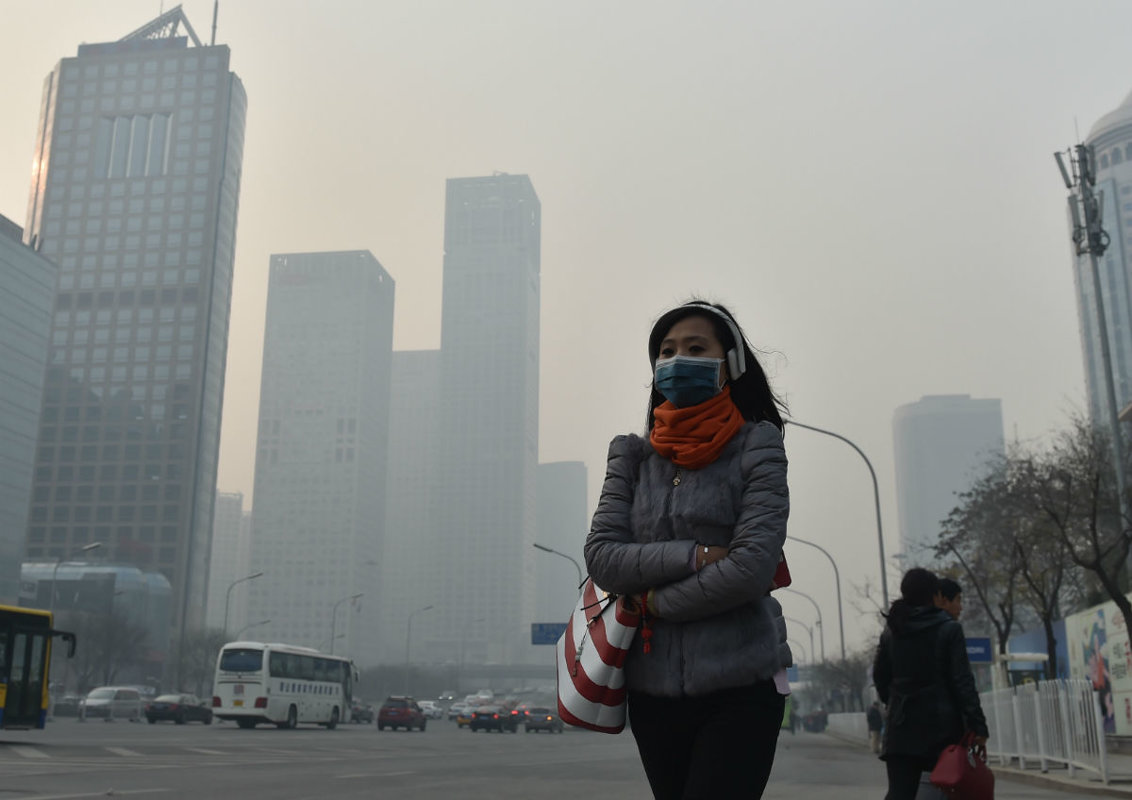
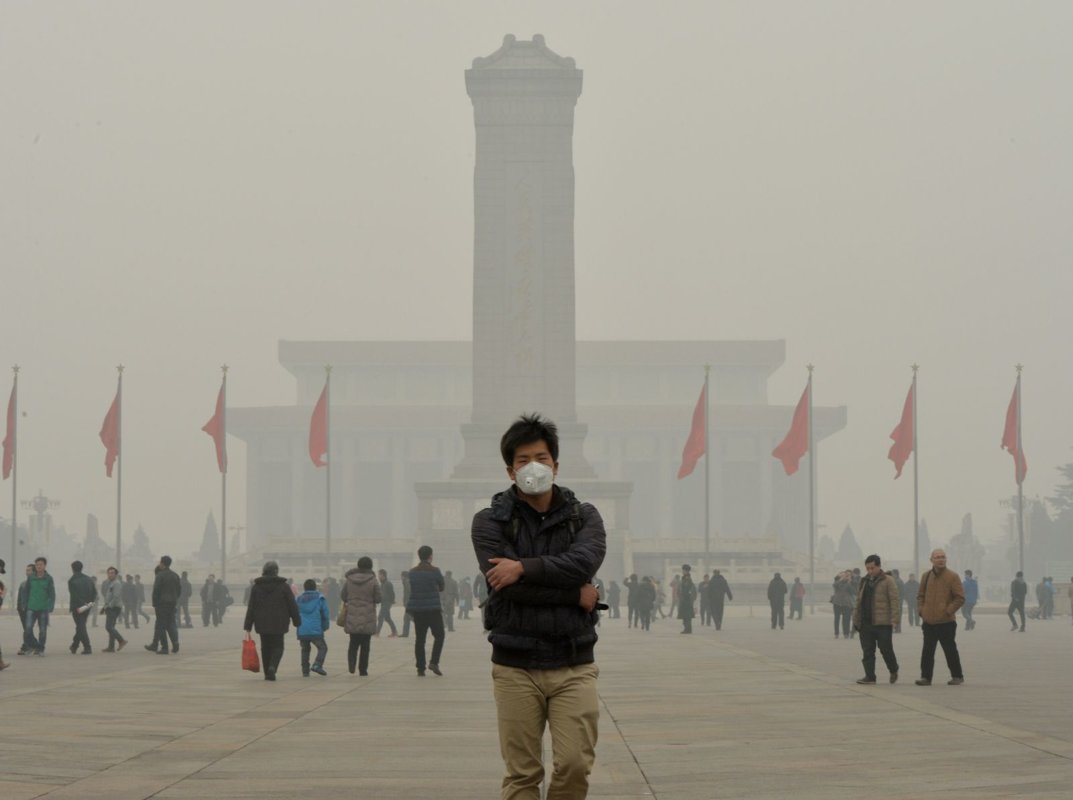
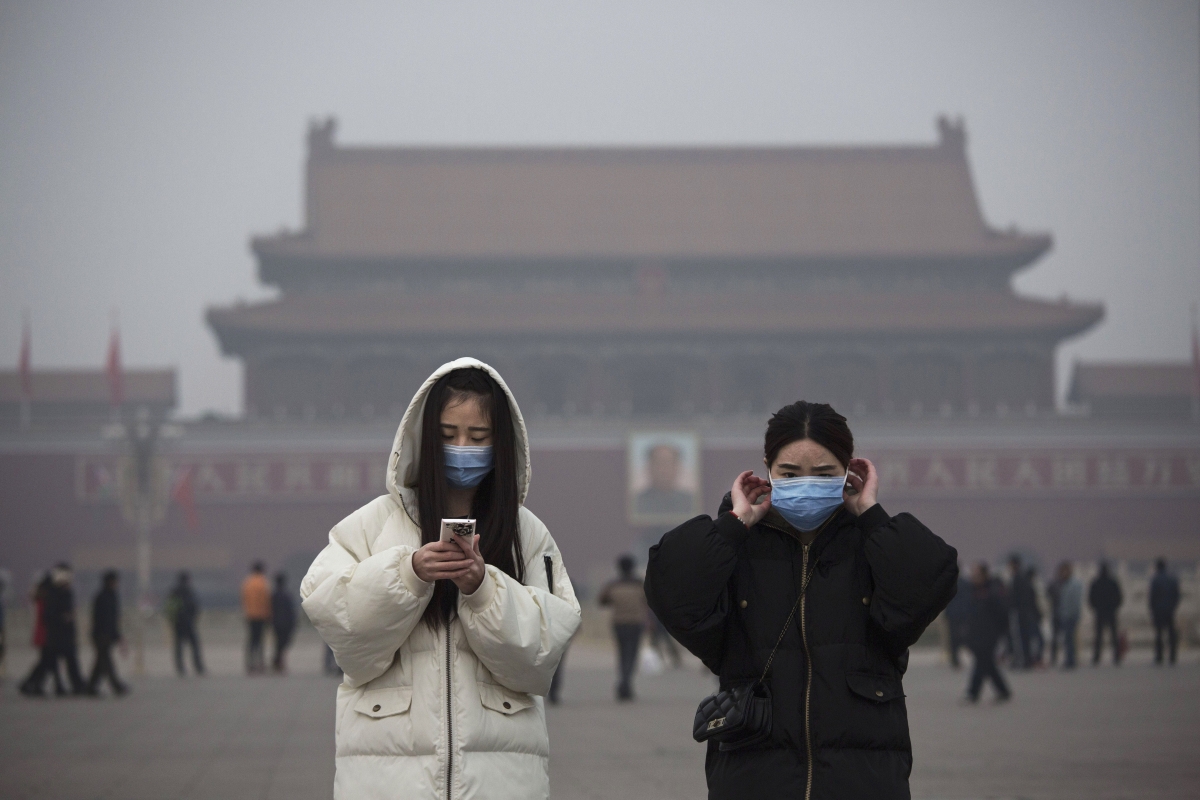 Toward
the end of last year through the beginning of this year, a dense haze
containing toxic substances covered up to 25 percent of the Chinese
mainland, affecting close to half the country’s population, or 600
million people. The number of people who developed air pollution-related
diseases was 20-30 percent greater compared to previous years.China
exceeds global limits for air pollution, but the government has been
hesitant to monitor the health impacts.For the first time, China’s
environmental watchdog will monitor, investigate and evaluate public
health risks posed by environmental pollution.
Toward
the end of last year through the beginning of this year, a dense haze
containing toxic substances covered up to 25 percent of the Chinese
mainland, affecting close to half the country’s population, or 600
million people. The number of people who developed air pollution-related
diseases was 20-30 percent greater compared to previous years.China
exceeds global limits for air pollution, but the government has been
hesitant to monitor the health impacts.For the first time, China’s
environmental watchdog will monitor, investigate and evaluate public
health risks posed by environmental pollution.
